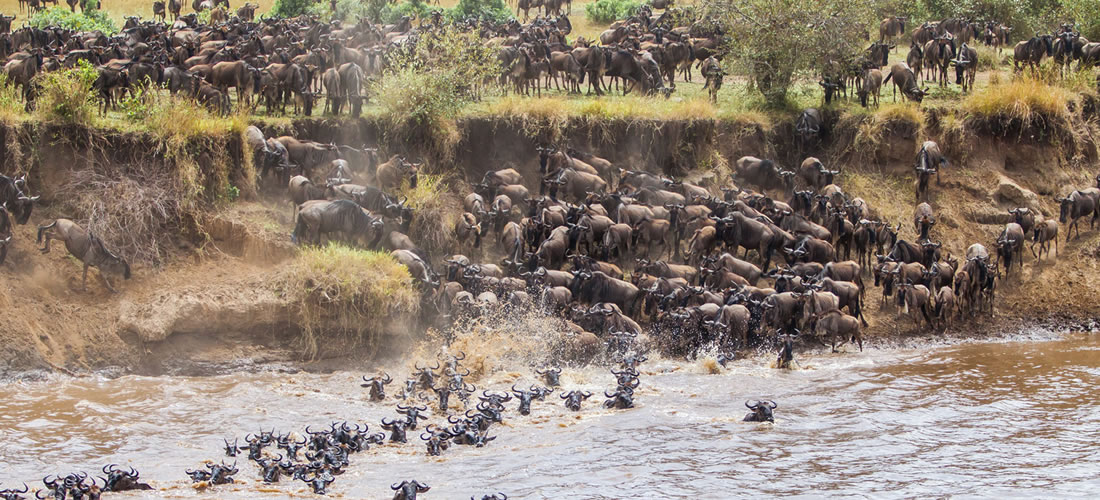Wildebeest Migration Trails in Maasai Mara
At the end of July to mid-October, the herds of wildebeests divide themselves into smaller groups residing in the North of Serengeti and in the Maasai Mara, during this time if it’s a dry season the wildebeests gather around water bodies particular the Masai River, whereby this river also has hungry crocodiles ready to eat those that come to drink water.
In mid to late October there are short rains; because of this the wildebeests start moving south of the Maasai Mara in Kenya. So, by this time the best place to view the migration is the Masai Mara though this reserve is smaller than the Serengeti.
So, while here, you will not only observe the migration but also you could visit the nearby Maasai communities that have been there for very many years.
During this period, you can observe the migration while staying at different lodges and Camps. Staying in northern Serengeti is advisable since most herds are there and also are in the Masai Mara.
For those in need of a luxurious treat the Singita’s Mara River Tented Camp can work for you, another is Sayari camp which is a few minutes away from the wildebeest herds. Other accommodation facilities include; Nomad’s Lamai Camp, Lemala Kuria Hills, Olakira, Serian, Kimondo, and Governor’s Camp.
The rains continue throughout November so the wildebeests continue to move south and east. By December they start moving back to Southern Serengeti to the rich and short grasses. Most herds arrive by the end of December towards beginning of January which marks the end of that cycle.
The Maasai Mara is intersected by three major rivers: The sand, the Talek, and the Mara. The Mara River is famous for the dramatic spectacle of thousands of wildebeest and zebra attempting to cross as part of their annual migration.
The riverbanks are densely lined with trees and shrubs; otherwise, the primary habitat of the Masai Mara is open grassland studded with acacia thickets.


